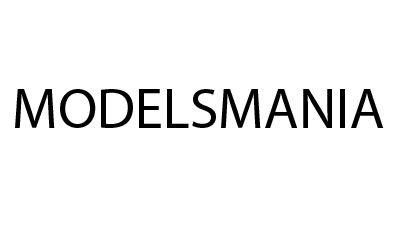In today’s hyperconnected world, we rely on technology for nearly every aspect of our lives—work, communication, entertainment, and even relaxation. While the digital age has brought countless conveniences, it has also led to a growing dependence on screens, which can impact mental health, productivity, and relationships. A digital detox—taking intentional breaks from technology—offers a chance to reset and reconnect with the real world.
This guide explores the importance of unplugging, the benefits of a digital detox, and practical steps to help you disconnect while fostering healthier habits with technology.
Why a Digital Detox Matters
Technology is deeply integrated into our lives, but overuse can lead to negative consequences. Studies have linked excessive screen time to anxiety, depression, sleep disturbances, and reduced attention spans. The constant notifications, emails, and scrolling can also create a sense of overwhelm, making it difficult to focus or enjoy the present moment.
Signs You May Need a Digital Detox
•You feel anxious or restless when away from your phone.
•You find yourself endlessly scrolling through social media without purpose.
•Technology disrupts your sleep or personal relationships.
•You experience “phantom notifications” or constantly check your devices for updates.
•You struggle to focus on tasks without distractions from screens.
The Benefits of a Digital Detox
Taking a break from technology isn’t just about cutting back screen time—it’s about improving overall well-being and fostering deeper connections with yourself and others.
1. Improved Mental Health
Reducing screen time can lower stress and anxiety levels by eliminating the constant stream of notifications and information.
2. Better Sleep
Unplugging before bed reduces exposure to blue light, which interferes with melatonin production and disrupts sleep cycles.
3. Increased Productivity
Fewer distractions mean more focus on tasks, whether it’s work, hobbies, or spending quality time with loved ones.
4. Enhanced Relationships
Disconnecting from screens allows for more meaningful, face-to-face interactions, strengthening personal connections.
5. Reconnecting with Nature
A digital detox encourages outdoor activities and a greater appreciation for the natural world, which can boost mood and creativity.
How to Prepare for a Digital Detox
A successful digital detox requires intention and planning. Follow these steps to ease the transition and set yourself up for success.
1. Identify Your Goals
Decide why you want to unplug. Are you looking to reduce stress, improve focus, or reconnect with loved ones? Clarifying your goals will keep you motivated.
2. Assess Your Digital Habits
Take note of how much time you spend on devices and which activities consume most of your attention. Apps like Screen Time (iOS) or Digital Wellbeing (Android) can help track your usage.
3. Set Boundaries
Determine how long your detox will last and which devices or apps you’ll limit. You might start with a 24-hour break or commit to specific tech-free periods each day.
4. Communicate Your Plan
Let friends, family, and colleagues know about your digital detox so they can support you and adjust expectations for responses.
5. Create a “Detox Kit”
Prepare activities or tools to fill the time you’d normally spend on screens. Include books, journals, puzzles, workout gear, or supplies for hobbies.
Practical Steps to Unplug
A digital detox doesn’t mean completely abandoning technology—it’s about finding a healthier balance. Here are actionable tips to help you disconnect:
1. Start Small
Begin with manageable changes, such as turning off notifications, setting app limits, or designating tech-free hours. Gradually increase your detox as you become more comfortable.
2. Establish No-Tech Zones
Create spaces in your home where devices are off-limits, such as the dining room, bedroom, or bathroom. This encourages presence and reduces mindless scrolling.
3. Use Airplane Mode
Switch your phone to airplane mode during work sessions, meals, or leisure activities to eliminate distractions.
4. Replace Screens with Activities
Fill your time with offline pursuits that bring joy and relaxation, such as reading, cooking, hiking, or spending time with loved ones.
5. Practice Digital Mindfulness
When you do use technology, do so intentionally. Check emails at designated times, avoid multitasking, and focus on one task at a time.
6. Try Analog Alternatives
Revisit non-digital tools, like physical books, board games, or paper planners. These can provide a refreshing change from screen-based activities.
Navigating Challenges During a Digital Detox
Unplugging from technology can feel uncomfortable at first, but with preparation and perseverance, you can overcome common obstacles.
1. Dealing with FOMO (Fear of Missing Out)
Remind yourself that stepping away from social media won’t make you miss anything significant. Focus on the present moment and what you’re gaining instead of what you’re temporarily giving up.
2. Handling Boredom
Use downtime as an opportunity to explore new hobbies or reconnect with old ones. Embrace boredom as a chance to reflect or recharge.
3. Addressing Work Obligations
If work requires constant connectivity, set boundaries by designating tech-free breaks or limiting screen time outside of office hours.

Reaping the Rewards of a Digital Detox
As you unplug, you’ll likely notice positive changes in your mental health, relationships, and overall quality of life. Here are ways to maximize the benefits:
1. Reflect on Your Experience
Journal about how the detox has impacted your mood, focus, and connections. This can reinforce the value of reducing screen time.
2. Establish Long-Term Habits
Incorporate elements of your detox into daily life, such as limiting social media use, practicing digital mindfulness, or scheduling regular tech-free days.
3. Stay Connected to Your Goals
Regularly revisit the reasons for your detox and adjust your tech habits as needed to maintain a balanced relationship with technology.
Incorporating Digital Balance Into Everyday Life
A full detox isn’t always necessary—sometimes, small, sustainable changes are enough to improve your relationship with technology.
1. Implement Tech-Free Mornings and Evenings
Start and end your day without screens to promote better focus and sleep.
2. Schedule Social Media Breaks
Limit social media use to specific times of the day to prevent mindless scrolling.
3. Prioritize Face-to-Face Interaction
Make a habit of choosing in-person conversations over texting or messaging whenever possible.
4. Practice “Single-Tasking”
Instead of juggling multiple apps or devices, focus on one task at a time to improve efficiency and reduce stress.
Conclusion
A digital detox is a powerful way to reclaim your time, reduce stress, and foster deeper connections with the real world. By taking intentional steps to unplug, you can create space for mindfulness, creativity, and meaningful experiences.
Start small, set realistic goals, and remember that it’s not about completely eliminating technology—it’s about using it in a way that supports your well-being. With practice and consistency, you can find a healthier balance and reap the rewards of a more connected and fulfilling life. So take a deep breath, put your phone down, and reconnect with the world around you—you might be surprised at what you’ve been missing.




